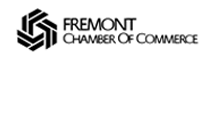What is your favorite part of your job?
Helping clients to achieve their needs with a pleasant professional experience. I also enjoy acting as a six-figure arbitrator, more simply a judge. I resolve disputes between people, involving evaluations, expert opinions, and the import and export business practice.
What is your least favorite part of your job?
Just like most people in other businesses, I dislike dealing with unhappy customers, who can’t tell what’s right and what’s wrong.
How do different cuts of gemstones affect the gem itself?
Cutting gemstones mainly affects their value, shape, and color. Gemstones are mostly acquired for their color, brilliance, and rarity, and they are sold by weight. This is important, as the gem cutter will want to cut the stone, for the best yield form rough. Gemstones have different, almost abstract, shapes in their uncut form, so it is necessary to cut it in a form closest to its rough shape to retain as much weight as possible. The best color is achieved in a gem if it is cut so that color is concentrated at the bottom of the stone. Brilliance is emphasized by cutting the best angles for maximum light to be reflected in addition to high polished facets, which contribute to the gemstone surface pleasant appearance.
Is it easy to tell between naturally occurring and synthetic gemstones?
Yes, and no. Depending on the gemstones being dealt with, a new synthetic material may be difficult to trace. It’s not always easy to tell the difference in new material. Synthetic gemstones possess the same physical and chemical compositions as the corresponding natural stone. However, by studying the inclusions, or characteristics, within a gem, identifying how it was made makes it possible to tell. Many gem experts and gemologists studying inclusions in gemstones can even tell where it was mined! Microscopes can aid identification too; for example, seeing triangular metal platelets in alexandrite proves that it is man-made. Other than these methods, gemologists may use spectroscopes. Used in the food and space industries to identify materials, it shows color bandings of reflected light. These are always the same for each specific material.
Reflectometers measure the reflective index, RI, which measure the critical angle, and display numbers on the Reflectometer screen, of light bending at a different speed while going through a gemstone. This is synonymous to looking at your hand through water – the light is bent, and your hand looks smaller and curved. In general, analyzing gemstones is a process of elimination, using different methods. It can be difficult at times. Some materials must even be sent to a laboratory, since a gemologist can’t perform all tests.
In practice, do you deal differently with organic and inorganic gemstones?
All organic gemstones have originated from living creatures. Some examples are amber from fossilized tree sap, coral from sea creatures, jet from pressurized decayed wood, and pearls from oysters. Work involving these gemstones must be done more carefully than with inorganic minerals. These stones must be kept away from chemical agents, heat, prolonged exposure to bright light, and dry environments. Ultrasonic cleaners will also damage organic gems very quickly. However, testing is easier, because most organic fakes are made from plastic. A thermal conductivity tester will reveal a burnt, acrid smell.
Do the ways in which gemstones are formed affect how they must be extracted from the earth?
Different gemstones are mined in different ways, based on how they are formed. For example, five large tons of dirt, on average, must be removed to find a one carat diamond! Explosives are used in some emerald mines, which bedded as layers in rocks, and many gemstones do not survive the process.
Does the formation of gemstones affect the refining process?
On a polishing wheel, most gemstones are refined, or cut and polished in the same direction. On the other hand, diamonds must be turned as they are being refinished, each time in the different direction of the crystal formation, called the grain. Cutting a diamond against the grain may cause damage to the polishing wheel.
How would you compare the studies of geology and gemology? (in terms of how it feels to work in such a career, and how intriguing the studies are to you)
Gemology is technically a subset of geology that deals solely with gems and gem materials. Gemstones form under high heat and pressure under the Earth’s outer crust. The next layer of the Earth is the mantle, made of hot molten rock. All forms dealing with Earth layers comprise geological science. However, geology can aid gemology studies. According to an acquaintance, Chuck Fipke, a geologist discovered the Canadian diamond mines by tracing icebergs moving diamond soils in 100000 years journey to the Great Lakes 1 ; this was the reason for the discovery of the largest diamond mines in Canada, The Ekati mine, Lac de Gras Northwest Territories. In addition, ants have been getting water from a river in Australia to build their colonies. As the mud mounds had shining spots, scientists followed the ants and found bigger diamonds at the riverbanks!
Is it easy to identify gems, even when they are in their rough state? Must they be polished first?
Gems can be identified in their rough state by their crystal formation, color, and specific gravity. The streak test may also be used. This observes the color of the powder seen after a mineral is scratched against a streak plate. However, this does not necessarily depend on the color of the mineral; for example, the streak of black jade is always green. A Mohs’ Hardness scale from one to ten also helps identify stones. A diamond is the hardest gemstone, with a hardness rating on ten. Still, most identification tests require polishing one side to obtain a refractive index, or RI, reading.
Is it possible to “repair” poor quality gemstones with fractures?
Yes, it is. In fact, fractures are repaired all the time with emeralds, routinely enhanced. Mineral oil is added to conceal the fractures; this is not considered to be a fraud according to the FTC, or Federal Trade Commission. In rubies, leaded glass flux is added to clarity enhance the gems by filling fractures. Laser drills are used to remove inclusions in Diamonds including cleaning large fractures, then a strong flux is added. This is heated and baked at high temperatures to basically repair the fracture. All treatments as such, must be disclosed to consumers by law.
What is the cause of abnormal gemstones, such as blue diamonds and pink sapphires?
The different colors in gemstone, is caused by coloring agents and impurities available at the time of a particular crystal formation including iron, manganese and cobalt. For example, nitrogen is responsible for yellowish diamonds, and boron leads to blue diamonds. Although most sapphires are blue, pink sapphires are due to a high chromium quantity. The color in pink diamonds is still subject to scientific investigation.
Can gemstones influence the environment in which they are formed?
Studies are being conducted on this topic. Some gemstones can influence the environment in which they are formed. For example, geodes are crystals formed within volcanic or sedimentary rock. An organic gemstone, amber,, is hardened tree sap. When sticky, it can trap insects and other tiny animals, thus preserving them in a kind of time capsule. Gemstones can also dramatically affect the environment during the mining process, which may be destructive.
What are some of the easiest and hardest gemstones to work with?
Some easier gemstones to work with can be cut in a cabochon manner, which is described as having a convex top and a flat bottom. These stones are often opaque and highly included. It is a quick job to prepare stones such as opals, agate, and tigers eye in this way. However, more transparent gemstones, such as corundum – ruby and sapphire – are often faceted. This is more complicated, as facets must meet precisely at one point. The risk of damaging a valuable gemstone requires only experts to work at this job.
How long does it take to distinguish between very similar types of gemstones?
It depends, some gemstones take longer to identify than others. A refractive index test only takes a few minutes, and is usually all that is required. However, in the case of aquamarine and Blue Topaz, you can use a special filter, and you get an answer in seconds. Blue topaz is red and aquamarine is green under this filter.
Do you have any favorite stones to work with, or are they all equally interesting?
All gemstones are interesting to me. However, diamonds are always the best. They have a structured market and always excellent to get an opportunity to work with them. Still, other gemologists and jewelers have their own, different preferences.
What are some of the most interesting experiences or stories you have to tell involving your work?
There is one specific story that will stay with me forever.
A client came to the store, telling me that I’m the best gemologist and the best business man she’s ever met.
“How so?” I asked. She said, “I just completed my (GIA) jewelry repair class. I did this because when I visited your store, you looked through your microscope, and took time to explain to me the risk involved to repair my dad’s ruby ring. As I told you, my dad recently passed away and this is the only important item of his that I have left, so I naturally wanted to repair it. So, you know that I needed a second opinion, so I took the ring to another jeweler. He said that he could repair the ring for not much money, and that I shouldn’t worry about anything. When I picked up the ring at the due date, the ruby was shattered and the ring was totally damaged. I then had to take the jewelry repair class, to find out who was right and who was wrong. Afterwards, I found out that you were telling the truth all along.”
In this case, the sentimental value by all means exceeds the monetary value. Also, can we imagine any other profession where the clients actually attend school to learn about it?
How are gemstones different to work around than normal minerals?
A gemstone is branded as such – it must be able to stand high heat, survive exposure to chemicals such as acids, is resistant to breaking, and is relatively hard. Gemstones are rarest and most refined of all minerals. In general, other minerals are softer, break easily, dissolve or alter in chemicals. Many are used for carving and are collected. In making jewelry, however, only gemstones are used.
Do you know anything interesting about gemstones throughout history?
Well, the British Crown for the last 200-300 years was thought to have the largest ruby in the world. After a gemological test (GIA), however, it was proven to be a red spinel. This is similar to a ruby, but less valuable!
In the past, ancient civilizations admired gemstones immensely. Pharaohs in Egypt and emperors in China valued precious stones quite a lot. In fact, Chinese emperors were covered with jade for protection. Wars have been fought, such as those between India and Persia “Nader Shah”, to retrieve gems from a neighboring country.
Many people believed in the healing powers of certain crystals. This is illustrated in Ayurveda, meaning “Science of Life” in the Indian language Sanskrit.
There are many other historical tales involving gemstones, such as the so-called cursed Hope Diamond, and the significance of certain gems, such as birthstones.








